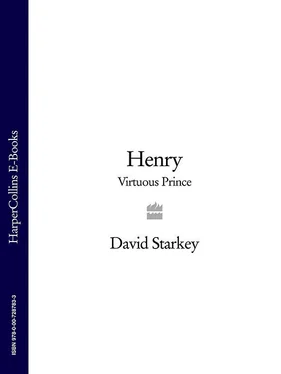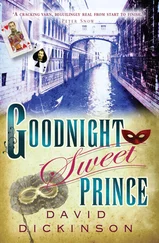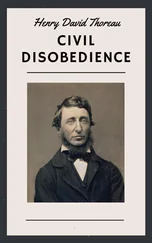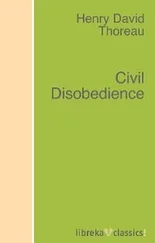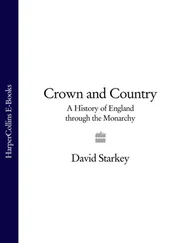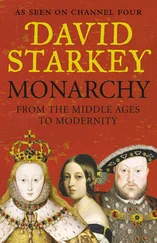These bare facts are all that has been known hitherto about Henry’s birth. But somehow they have never seemed quite enough. Fortunately, another piece of evidence has turned up which makes clear that Henry was christened with all the pompous ritual laid down in the handbook of court protocol, known as The Ryalle Book . 2 2 . K. Staniland, ‘The Royal Entry into the World’, in D. Williams, ed., England in the Fifteenth Century: Proceedings of the 1986 Harlaxton Symposium (Woodbridge, 1987), 299, n. 8; AR I, 304–6, 333–8. Collectanea IV, 179–84. The Ryalle Book itself is discussed by D. Starkey, ‘Henry VI’s Old Blue Gown: The English Court under the Lancastrians and Yorkists’, The Court Historian 4 (1999), 1–28. 3 . TNA: E 404/81/1 (1 September 1491). 4 . For instance, in The Great Chronicle , 248, the entry concerning Henry’s birth is not only an insertion, made long after the event (‘This year on Saint Peter’s Day in June was borne Henry, duke of York, the king’s second son which reigned after him’), it also appears under the wrong year. The ‘Beaufort Hours’, 279, notes Henry’s birth only with the bare date; in contrast, for both Arthur and Margaret, the place and the exact hour of birth are given as well.
How really could it have been otherwise?
The christening, like most of the ceremonies of the Tudor court, combined the sacred with the secular. And each reinforced the theatricality of the other. First a stage was built, consisting of a tall circular wooden platform with tiers of steps and a central iron post. The assisting clergy stood on the lower steps, leaving the upper step and the reinforced top, with the massive silver font in its centre, free for the stars of the show: Bishop Foxe and Henry.
And heaven help any officious priest or deacon who spoiled the view!
Next, the Tudors’ love of rich, many-textured fabrics came into play. These were the principal source of decoration in a court that was always on the move: they could transform a bare and empty chamber in a long unlived-in palace in an hour or two; they could also turn, equally briskly, the plain box of the Friars’ church into a setting worthy of the prince that Henry was to be. In charge of these fabrics were the specialist staffs of the royal wardrobes, who now took over.
Benjamin Digby, yeoman of the queen’s wardrobe of the beds, and his men covered the wood and iron of the platform with gaily coloured cloth; hung a fringed and embroidered cloth-of-gold canopy over the font from ‘line’ or cords; lined and wrapped the font with fine linen or ‘lawn’ and trimmed its edge with a sheer, almost translucent stuff known as ‘Cypress’ from its original place of manufacture. Finally, other household officers clad the walls of the church with cloth-of-gold and tapestries and laid rich carpets on the floor. 3 3 . TNA: E 404/81/1 (1 September 1491). 4 . For instance, in The Great Chronicle , 248, the entry concerning Henry’s birth is not only an insertion, made long after the event (‘This year on Saint Peter’s Day in June was borne Henry, duke of York, the king’s second son which reigned after him’), it also appears under the wrong year. The ‘Beaufort Hours’, 279, notes Henry’s birth only with the bare date; in contrast, for both Arthur and Margaret, the place and the exact hour of birth are given as well.
The stagery complete, the performance could begin. Henry was undressed in the ‘traverse’ or tent-like green room, where more Cypress had been used to cover and draught-proof the adjacent windows. Then Foxe gave him his name and plunged him bodily three times into the waters of the font. Even this had been stage-managed, as the water had been gently warmed beforehand so as not to shock Henry and make him spoil the show by crying.
A new Christian had entered the world, and a new royal prince was ready to take his place in the firmament. Trumpets sounded, the attendants lit their torches, the heralds put on their gold-embroidered tabards and Henry, wrapped in a mantle of cloth-of-gold furred with ermine and clutching a decorated and lighted candle in his hands, was carried in triumph in a burst of light and sound.
Henry had come into the world on a stage; he would live on one and die on one.
Not, it must be admitted, that anybody at the time took much notice.
No chronicler, herald or contemporary historian gave the event more than a passing – and usually retrospective – mention. None of his father’s poets laureate was inspired to commemorative verse. Even his grandmother, Lady Margaret Beaufort, only noted the bare details of his birth in the calendar of the book of hours which she used as a sort of family chronicle. 4 4 . For instance, in The Great Chronicle , 248, the entry concerning Henry’s birth is not only an insertion, made long after the event (‘This year on Saint Peter’s Day in June was borne Henry, duke of York, the king’s second son which reigned after him’), it also appears under the wrong year. The ‘Beaufort Hours’, 279, notes Henry’s birth only with the bare date; in contrast, for both Arthur and Margaret, the place and the exact hour of birth are given as well.
How did it come to pass that the Tudor who would make most noise in the world should enter it so quietly and almost unobserved? Partly it was a matter of accident: Henry happened to be born at the wrong time and in the wrong place. It was high summer, and most people who mattered were about to leave stinking, plague-ridden London for the country delights of the Long Vacation. Nor did Greenwich help. Still officially known as Placentia or ‘Pleasure’ in medieval Latin, it was a semi-private riverside retreat, more the queen’s than the king’s and emphatically off the beaten track.
Nevertheless, intention came into it as well. That Greenwich was used for Elizabeth of York’s confinement in the first place suggests that a decision had already been taken to downplay the event. For Henry was the wrong baby to attract attention anyway. In the fullness of time he would be a royal star, effortlessly drawing all eyes and becoming the prime mover of the political cosmos and the axis round which English history turns. Then, he was only the spare and not the heir.
And the spare did not matter – or, at least, did not matter very much.
But there is a paradox, as there will be so often in Henry’s story. What made Henry relatively unimportant to others, including his own parents, was supremely important to him. For his status as second son was to condition almost everything about his first dozen years: his upbringing, his education, his relationship with his parents and his siblings, his attitude to women, even where he was brought up.
In short, in so far as the Henry we know was a product of nurture rather than nature, that nurture was determined by his also-ran place in the family pecking order.
On the other hand, of course, all this matters – to us and indeed to Henry – only because in circumstances unimaginable, or at least unimagined, at the time of his birth, Henry was to become the eldest surviving son.
And that changed everything – for England as well as for Henry.
Notes - CHAPTER 1: ENTRY INTO THE WORLD
1. LP IV iii, 5791.
2. K. Staniland, ‘The Royal Entry into the World’, in D. Williams, ed., England in the Fifteenth Century: Proceedings of the 1986 Harlaxton Symposium (Woodbridge, 1987), 299, n. 8; AR I, 304–6, 333–8. Collectanea IV, 179–84. The Ryalle Book itself is discussed by D. Starkey, ‘Henry VI’s Old Blue Gown: The English Court under the Lancastrians and Yorkists’, The Court Historian 4 (1999), 1–28.
Читать дальше
